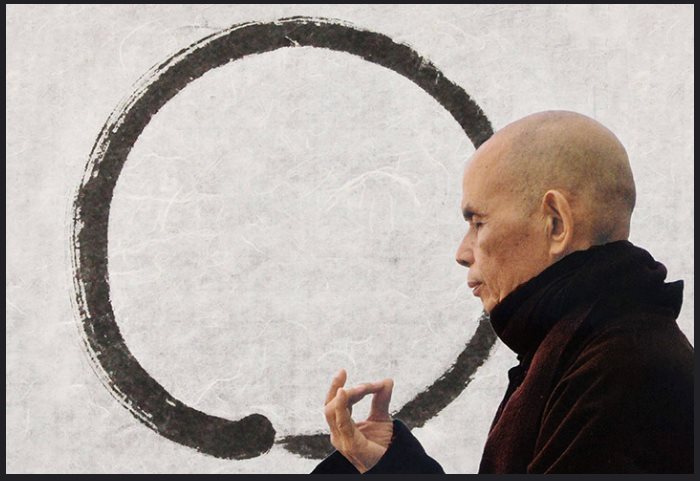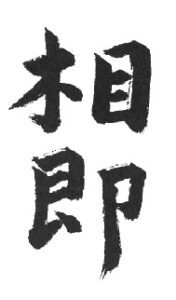by Pam Marraccini | afflictions, anger, awareness, Buddha, ignorance, mental formation, mind consciousness, understanding
 In Buddhist psychology, the word samyojana refers to internal formations, fetters or knots. When someone says something unkind to us, for example, if we do not understand why he said it and we become irritated, a knot will be tied in us. The lack of understanding is the basis for every internal knot. It is difficult for our mind to accept that it has negative feelings like anger, fear, and regret, so it finds ways to bury these in remote areas of our consciousness. We create elaborate defense mechanisms to deny their existence, but these problematic feelings are always trying to surface. If we practice mindfulness, we can learn the skill of recognizing a knot the moment it is tied in us, so that the work of untying them will be easy. Otherwise, they will grow tighter and stronger.
In Buddhist psychology, the word samyojana refers to internal formations, fetters or knots. When someone says something unkind to us, for example, if we do not understand why he said it and we become irritated, a knot will be tied in us. The lack of understanding is the basis for every internal knot. It is difficult for our mind to accept that it has negative feelings like anger, fear, and regret, so it finds ways to bury these in remote areas of our consciousness. We create elaborate defense mechanisms to deny their existence, but these problematic feelings are always trying to surface. If we practice mindfulness, we can learn the skill of recognizing a knot the moment it is tied in us, so that the work of untying them will be easy. Otherwise, they will grow tighter and stronger.
by Pam Marraccini | awareness, breathing, compassion, deep listening, heart, interbeing, listening, love, meditation, present, seed, store consciousness, suffering, understanding
 Ask with your whole body and mind… Ask the person who causes you the most suffering these questions: “Who are you who brings me such pain, who makes me feel so much anger and hatred?” To understand you have to become one with your beloved, and also with your so-called enemy. You have to worry about what they worry about, suffer their suffering, appreciate what they appreciate. You and your object of love cannot be two. They are as much you as you are yourself.
Ask with your whole body and mind… Ask the person who causes you the most suffering these questions: “Who are you who brings me such pain, who makes me feel so much anger and hatred?” To understand you have to become one with your beloved, and also with your so-called enemy. You have to worry about what they worry about, suffer their suffering, appreciate what they appreciate. You and your object of love cannot be two. They are as much you as you are yourself.
Continue until you see yourself in the cruelest person on Earth, in the child starving, in the political prisoner. Practice until you recognize yourself in everyone in the supermarket, on the street corner, in a concentration camp, on a leaf, in a dewdrop. Meditate until you see yourself in a speck of dust in a distant galaxy. See and listen with the whole of your being. If you are fully present, the rain of the Dharma will water the deepest seeds in your store consciousness, and tomorrow, while you are washing the dishes or looking at the blue sky, that seed will spring forth, and love and understanding will appear as a beautiful flower.

by Pam Marraccini | Uncategorized
The nondual nature of reality is also part of the four noble truths. Although there are four truths, e ach truth contains the others; they can’t be considered completely separately from each other. If you fully understand one noble truth, you understand all four. If you really begin to understand suffering, you are already beginning to understand the path to its cessation. The four truths inter-are. Each one contains the others.
ach truth contains the others; they can’t be considered completely separately from each other. If you fully understand one noble truth, you understand all four. If you really begin to understand suffering, you are already beginning to understand the path to its cessation. The four truths inter-are. Each one contains the others.
The first noble truth is ill-being. The second noble truth is the causes of ill-being, the thoughts and actions that put us on the path leading to ill-being. The third noble truth is well-being, the cessation of ill-being. The fourth noble truth is the path leading to well-being, the noble eightfold path.
The second noble truth is the action that leads to suffering, and the fourth noble truth is the action that leads to well-being, so in a sense they are two pairs of cause and effect. The second noble truth (the path of ill-being) leads us to the first (ill-being), and the fourth noble truth (the noble eightfold path) leads us to the third (well-being, the cessation of ill-being). Either we are walking the noble path or we are on the ignoble path that brings suffering to ourselves and others. We are always on one path or the other.
-Thich Nhat Hanh, “Good Citizens: Creating Enlightened Society”.
by Pam Marraccini | awareness, Buddha, compassion, concentration, consciouness, equanimity, happiness, joy, love, Peace, Thich Nhat Hanh

The Buddha’s teachings on love are clear. It is possible to live 24 hours a day in a state of love. Every movement, every glance, every thought, and every word can be infused with love. The Four Immeasurable Minds are strong concentrations (samadhi): the concentration of love, the concentration of compassion, the concentration of joy, and the concentration of equanimity. When you dwell in these concentrations, you are living in the most beautiful, peaceful, and joyous realm in the universe. If someone asks your address, you can say “the abodes of Brahma”- the Immeasurable Minds of love, compassion, joy, and equanimity. There are 5-star hotels that cost $2000.00 per night, yet the abode of Brahma offers more happiness than these. It is a 5000-star hotel, a place where we can learn to love and be loved.
Teachings on Love by Thich Nhat Hanh
by Pam Marraccini | awareness, consciouness, daily life, meditation, mindfulness, present, sitting meditation, true home, wisdom
Awareness of the body #31 your true home the everyday wisdom of Thich Nhat Hanh
IN sitting meditation, the first thing is to be aware that you are in a sitting position. Then, you can sit in a way that brings you calm, solidity, and well-being. We can notice the position of our body in each moment, when we are sitting, walking, standing, or lying down. We can be aware of our actions, whether we are sitting up, bending down, or putting on a jacket. Awareness brings us back to ourselves, and when we are fully mindful of our body, and living in the here and now, we are in our true home.
 In Buddhist psychology, the word samyojana refers to internal formations, fetters or knots. When someone says something unkind to us, for example, if we do not understand why he said it and we become irritated, a knot will be tied in us. The lack of understanding is the basis for every internal knot. It is difficult for our mind to accept that it has negative feelings like anger, fear, and regret, so it finds ways to bury these in remote areas of our consciousness. We create elaborate defense mechanisms to deny their existence, but these problematic feelings are always trying to surface. If we practice mindfulness, we can learn the skill of recognizing a knot the moment it is tied in us, so that the work of untying them will be easy. Otherwise, they will grow tighter and stronger.
In Buddhist psychology, the word samyojana refers to internal formations, fetters or knots. When someone says something unkind to us, for example, if we do not understand why he said it and we become irritated, a knot will be tied in us. The lack of understanding is the basis for every internal knot. It is difficult for our mind to accept that it has negative feelings like anger, fear, and regret, so it finds ways to bury these in remote areas of our consciousness. We create elaborate defense mechanisms to deny their existence, but these problematic feelings are always trying to surface. If we practice mindfulness, we can learn the skill of recognizing a knot the moment it is tied in us, so that the work of untying them will be easy. Otherwise, they will grow tighter and stronger.

 ach truth contains the others; they can’t be considered completely separately from each other. If you fully understand one noble truth, you understand all four. If you really begin to understand suffering, you are already beginning to understand the path to its cessation. The four truths inter-are. Each one contains the others.
ach truth contains the others; they can’t be considered completely separately from each other. If you fully understand one noble truth, you understand all four. If you really begin to understand suffering, you are already beginning to understand the path to its cessation. The four truths inter-are. Each one contains the others.
